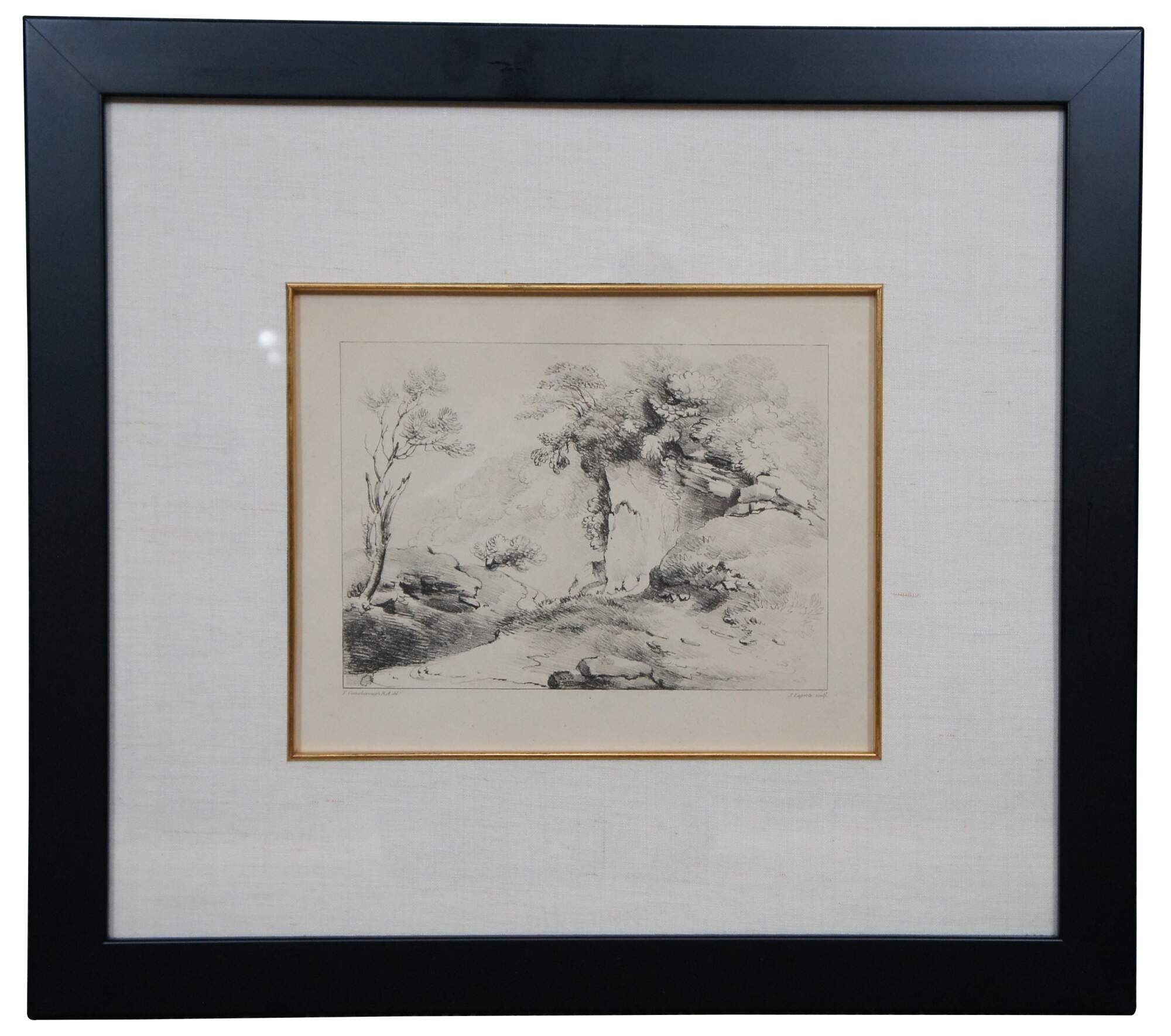
Shipping:
Free Shipping Included
Delivery:
Estimated 2-15 Business Days
Payments:
Credit Card, Check, Cash, PayPal, Apple Pay, Venmo
Returns:
30 Days 100% Money Back Guarantee, Buyer Pays Return Shipping
Description
Antique early 19th century, framed soft ground etching / engraving by John Laporte after a drawing by Thomas Gainsborough, showing a casually sketched landscape of rocks and trees.
“Thomas Gainsborough was born in 1727 in Sudbury, in the County of Suffolk, England. His mother was an accomplished flower painter. Gainsborough made little progress at grammer school, where he spent most of his time sketching. At the age of fifteen he was sent to London where he studied under the French engraver Gravelot. A few years later at Gravelot's instigation he was admitted into the Martin Lane Academy where he studied under the historical painter Francis Hayman.
In 1745 he returned to Sudbury and Ipswich, and in 1760 rose to fame as a portrait painter in the fashionable resort town of Bath. Gainsborough joined the Royal Academy as a founding member and in 1774 he returned to London, where he became Reynold's major competitor. In 1783 he disagreed with the Council of the Royal Academy, withdrew his pictures and never exhibited there again.
Gainsborough and Reynolds were rivals in their own time. Occasionally their portraits have a certain outer resemblance, largely because they both painted their subjects in the same fashionable costumes. But Gainsborough was as impulsive and unreasoning as Reynolds was cool and intellectual, so although they respected each other's work the two could scarcely have been friends.
Gainsborough was the most sought-after artist of his time. His fees were large and his talents were incontestable. He was a master at striking an attractive and if necessary, flattering likeness. He was too individual a genius to inspire many followers. Before he was aware of the Roman or Dutch landscape painters, he had spent hours as a boy sketching his own Suffolk countryside. If it had not been necessary to paint portraits to make his living, he would gladly have devoted himself to landscape painting and he never lost his interest in this form of art.
Although he claimed to prefer landscapes, he could not sell them. He painted so many portraits that he had become fed up with them. He longed for the freedom of painting landscapes, which he could do with quietness and ease. He did not paint on location, but composed in his studio using a kind of model. But when he died in 1788 his studio was cluttered with unsold landscapes.”
“John Laporte (1761-1839) - Topographical draughtsman and engraver; often published his own prints; not clear whether he was born in Ireland and was taught there by his master, John Melchior Barralet, a Huguenot from Dublin, or in London where Barralet taught from the 1770s. Became a member of the New Watercolour Society in 1834.”
Condition
Very Good
Dimensions
23.25” x 0.875” x 20.75” / Sans Frame – 12” x 9.5” (Width x Depth x Height)